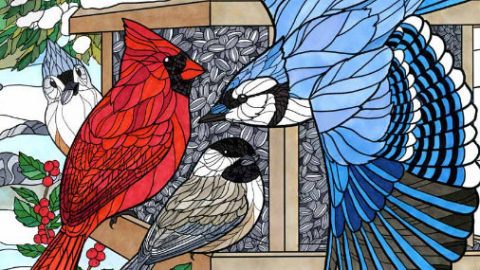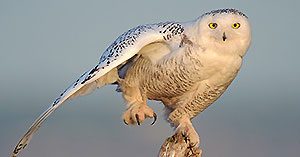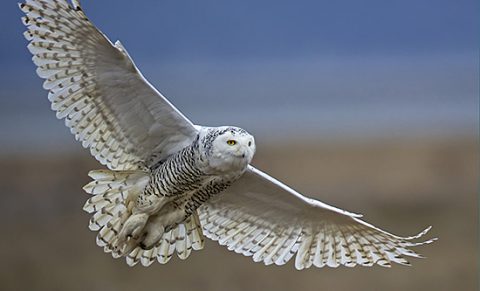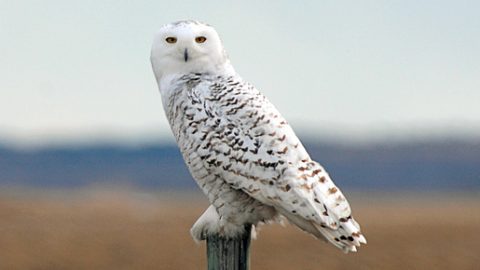Snowy Owls Aren’t Starving: Two Canadian Farmers Help Bust a Pervasive Myth
By Erica Cirino
Snowy Owl photo by David Allemand/Minden Pictures. January 7, 2022Every year Snowy Owls descend out of the Arctic, sometimes in smatterings, sometimes in massive irruptions, to spend winter in southern Canada and the Lower 48 states. They pop up in odd places—hunkering down on haystacks in farm fields, just off the runways at airports, atop light poles in grocery store parking lots—to the delight of birders and Harry Potter fans.
It’s also common for some people to feel anxiety over the snowies, believing them to be hungry vagrants. Last January, when Snowy Owls were being sighted in Michigan’s Upper Peninsula (as they are every winter), a local TV station reported that the owls’ southern travels were “linked to food supply” and that “Snowy Owls often arrive in Michigan weakened and starving.” That first statement is often true, but the second is generally not true, according to recent research.
A popular explanation for Snowy Owls’ southward flights is that they are driven by starvation, but according to University of Saskatchewan scientist Karen Wiebe, it’s generally not true. In August Wiebe and her graduate student Alexander Chang published research that showed most Snowy Owls wintering in southern Canada appeared to be doing just fine. They found that the average body mass of a wild adult Snowy Owl was 73% above the emaciation threshold. Indeed, many of the owls actually put on weight over the winter by increasing their subcutaneous fat stores (fat that accumulates under the skin on birds’ chests and beneath their wings and is used for both insulation and energy).
Wiebe’s findings came from detailed data on the body condition of more than 500 wild Snowy Owls trapped and banded on the prairie near Saskatoon over more than a decade. But the data set wasn’t gathered by Wiebe. She borrowed it from Marten Stoffel and Dan Zazelenchuk, a pair of Saskatchewan owl-banders.
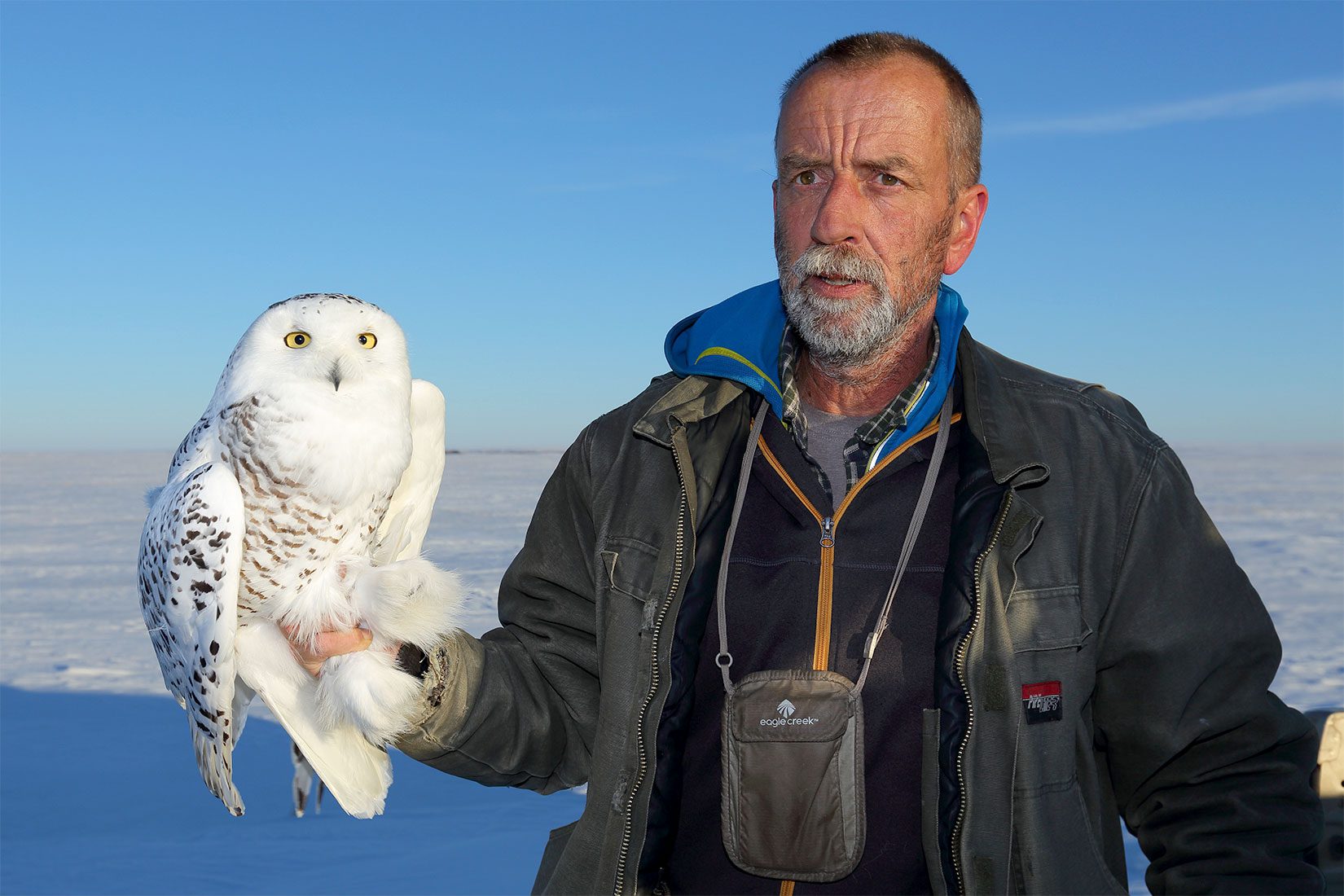
“I’ve been banding owls intermittently for over 40 years, since I was a teen in Holland,” says Stoffel, who immigrated to Canada in 1980. Zazelenchuk has also been banding birds for decades. They both got experience assisting the same master raptor bander in Saskatchewan. Then in 2003 they got their own licenses and started trapping and banding Snowy Owls.
Getting ahold of a Snowy Owl means driving for hours, snow crunching beneath the tires, along backroads in flat farm country. All the while, Stoffel and Zazelenchuk scan the iced-over earth through the truck’s frost-covered windshield trying to pick a football-sized white owl out of the bleak white landscape. And that’s just the beginning.
Related Stories
“Once you spot an owl, you walk toward it while trying to stay at least 300 to 400 yards away, where you place a live-baited trap,” says Stoffel. After baiting a trap with a pigeon protected in a cage, they head back to their truck and back up over a mile away. Then they wait—“sometimes for a few minutes, sometimes as much as seven hours”— for the owl to swoop at the pigeon and get ensnared in the live trap.
Even though Stoffel and Zazelenchuk are not trained scientists, they took a scientific approach to Snowy Owl banding. They analyzed each owl’s body condition, recorded their findings on a data sheet, and secured a band to the owl’s leg, if it didn’t already have one, so they could track it over time. Wiebe knew she had hit the mother lode of Snowy Owl data when she heard about Stoffel and Zazelenchuk in 2013. She asked for access to their data, and they willingly obliged.
“We are very grateful for the time and expense that Marten and Dan put into owl trapping because otherwise it would be very difficult for a master’s student to collect enough data to analyze,” says Wiebe.
Wiebe’s findings are backed up by Snowy Owl wintertime studies elsewhere. At Logan International Airport in Boston, Norman Smith of Massachusetts Audubon says he’s banded more than 700 snowies since 1981. He has not experienced a single year where hatch-year owls have showed signs of starvation due to lack of food. Early data from Project SNOWstorm, a research initiative begun in 2013 that has banded snowies from North Dakota to Maine and is tracking them via GPS, suggests the same.
“We’ve been finding owls with significant fat stores, some so plump they can be classified as ‘morbidly obese,’ because they’re coming from a part of the Arctic that’s overrun with rodents and other prey,” says Scott Weidensaul, a Project SNOWstorm researcher.
Weidensaul says it appears that when these owls irrupt and appear in large numbers in the U.S., it’s due to a bumper crop of young snowies during a very good breeding season—not a lack of food. This is where the common explanation that Snowy Owl movements are “linked to food supply” comes from. And the explanation is correct—it just doesn’t mean the owls are starving and in some cases can mean the opposite.
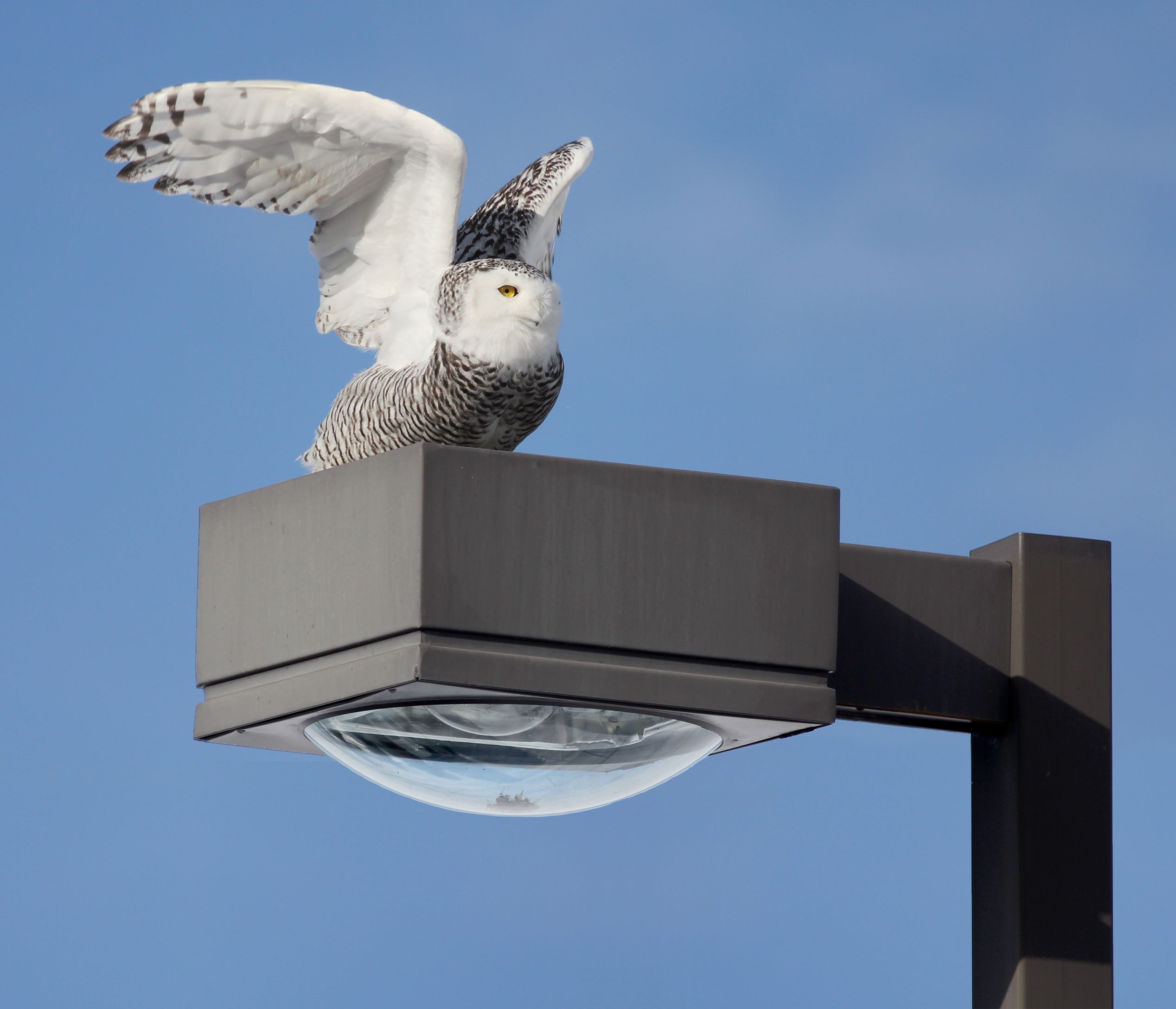
Even though wintering Snowy Owls tend to be eating well on average, inevitably some Snowy Owls are found in starving condition every winter, contributing to a perception that many owls are going hungry. These starving owls tend to be males. Wiebe’s research also analyzed the records of 103 thin or emaciated snowies admitted to wildlife rehabilitation and veterinary clinics in Saskatoon, Calgary, and Winnipeg between 1992 and 2015, and 63% were male. She says female Snowy Owls may fare better than males because they are larger and tend to be more aggressive, allowing them to take control of the best territories and exploit a more diverse menu of prey.
By and large, though, the snowies that come south in winter are just fine. (Additional evidence from Project SNOWstorm also backs up this conclusion.) “Most overwintering individuals on the prairies were not starving,” Wiebe wrote in her paper. Stoffel says the findings, based on his data, motivated him for this year’s winter Snowy Owl banding season.
“Banding these birds is expensive and tough. You put many miles on your vehicle looking for them and you have to be able to withstand extreme weather conditions,” says Stoffel, who pays for his self-funded banding efforts by working a part-time construction job. “Basically, you have to be pleasantly obsessed to do what I do.”
Reference
Chang, A.M., and Wiebe, K.L. 2016. Body condition in Snowy Owls wintering on the prairies is greater in females and older individuals and may contribute to sex-biased mortality. The Auk: Ornithological Advances. DOI: 10.1642/AUK-16-60.1

All About Birds
is a free resource
Available for everyone,
funded by donors like you
American Kestrel by Blair Dudeck / Macaulay Library
